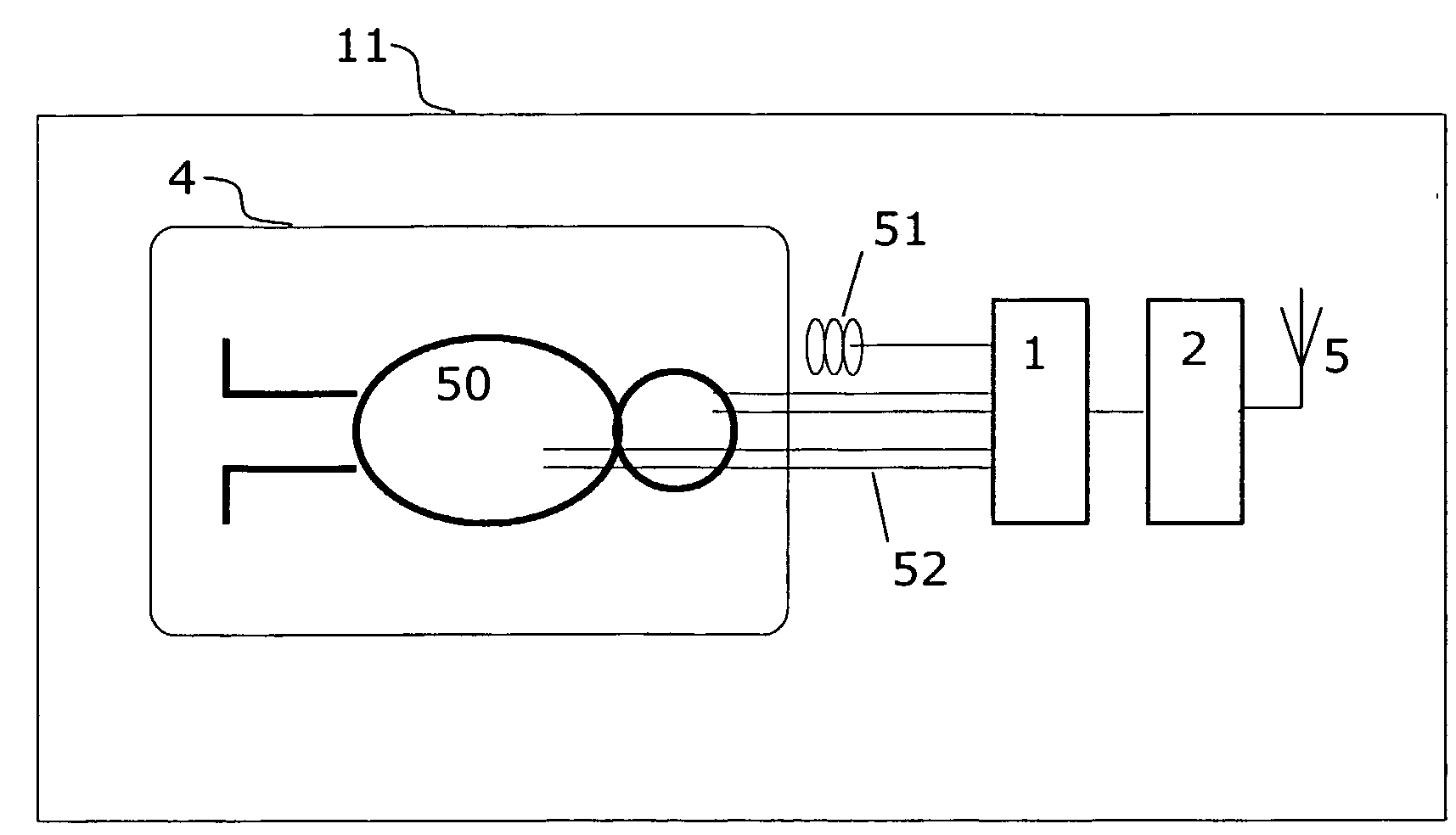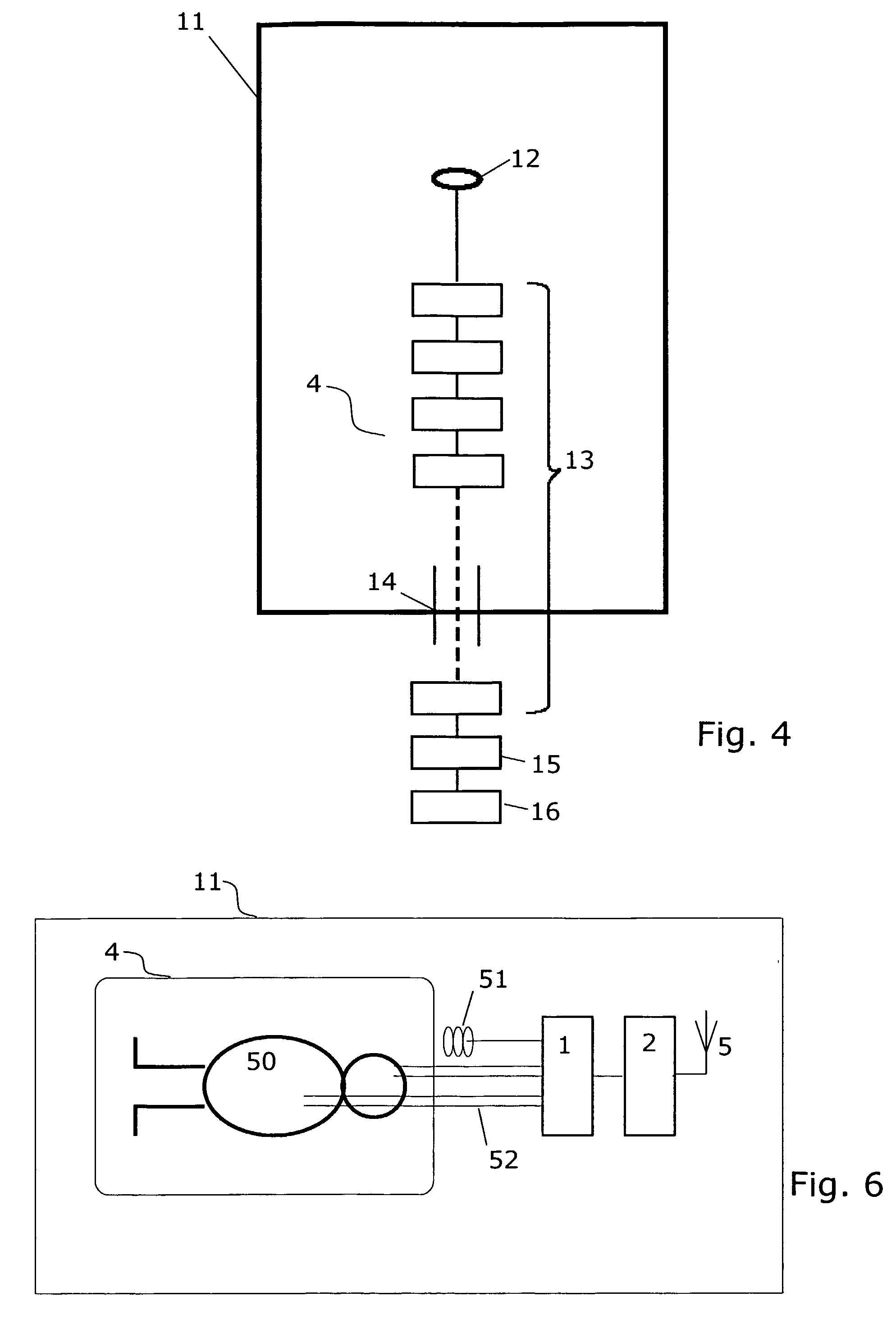Encoding and transmission of signals as RF signals for detection using an mr apparatus
- Summary
- Abstract
- Description
- Claims
- Application Information
AI Technical Summary
Benefits of technology
Problems solved by technology
Method used
Image
Examples
Embodiment Construction
[0094]In a preferred embodiment, the present invention provides a method and a system for recording EPH signals, subject responses and other signals to be generated inside a MR room and recorded during a MR scanning or spectroscopy. In other aspects, the invention relates to an MR apparatus or a receiving coil of an MR apparatus configured to perform such recording. In yet other aspects, the invention relates to the use of a MR apparatus or a modulator for making such recordings. These aspects will all be explained in the following in relation to a number of preferred embodiments.
[0095]In a first preferred embodiment, the method for recording non-MR signals according to the invention can involve a number of distinct steps described in the following with reference to FIGS. 1 and 2. Depending on the specific use, not all steps need to be present, and some steps may be performed simultaneously.
[0096]Steps I and II take place in a pre-processing unit 1 for detecting and processing non-M...
PUM
 Login to view more
Login to view more Abstract
Description
Claims
Application Information
 Login to view more
Login to view more - R&D Engineer
- R&D Manager
- IP Professional
- Industry Leading Data Capabilities
- Powerful AI technology
- Patent DNA Extraction
Browse by: Latest US Patents, China's latest patents, Technical Efficacy Thesaurus, Application Domain, Technology Topic.
© 2024 PatSnap. All rights reserved.Legal|Privacy policy|Modern Slavery Act Transparency Statement|Sitemap



